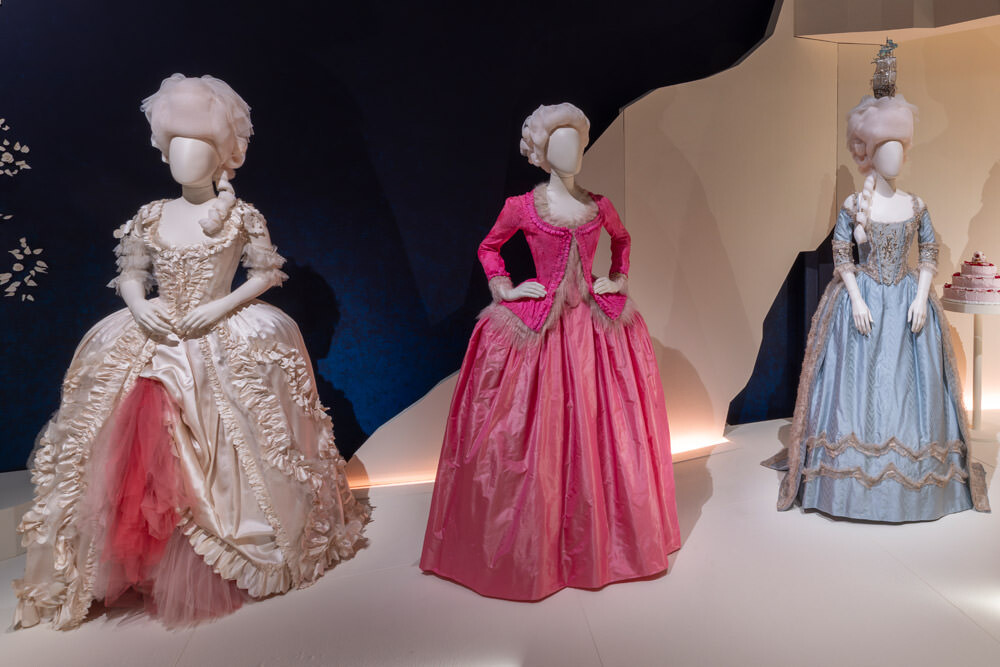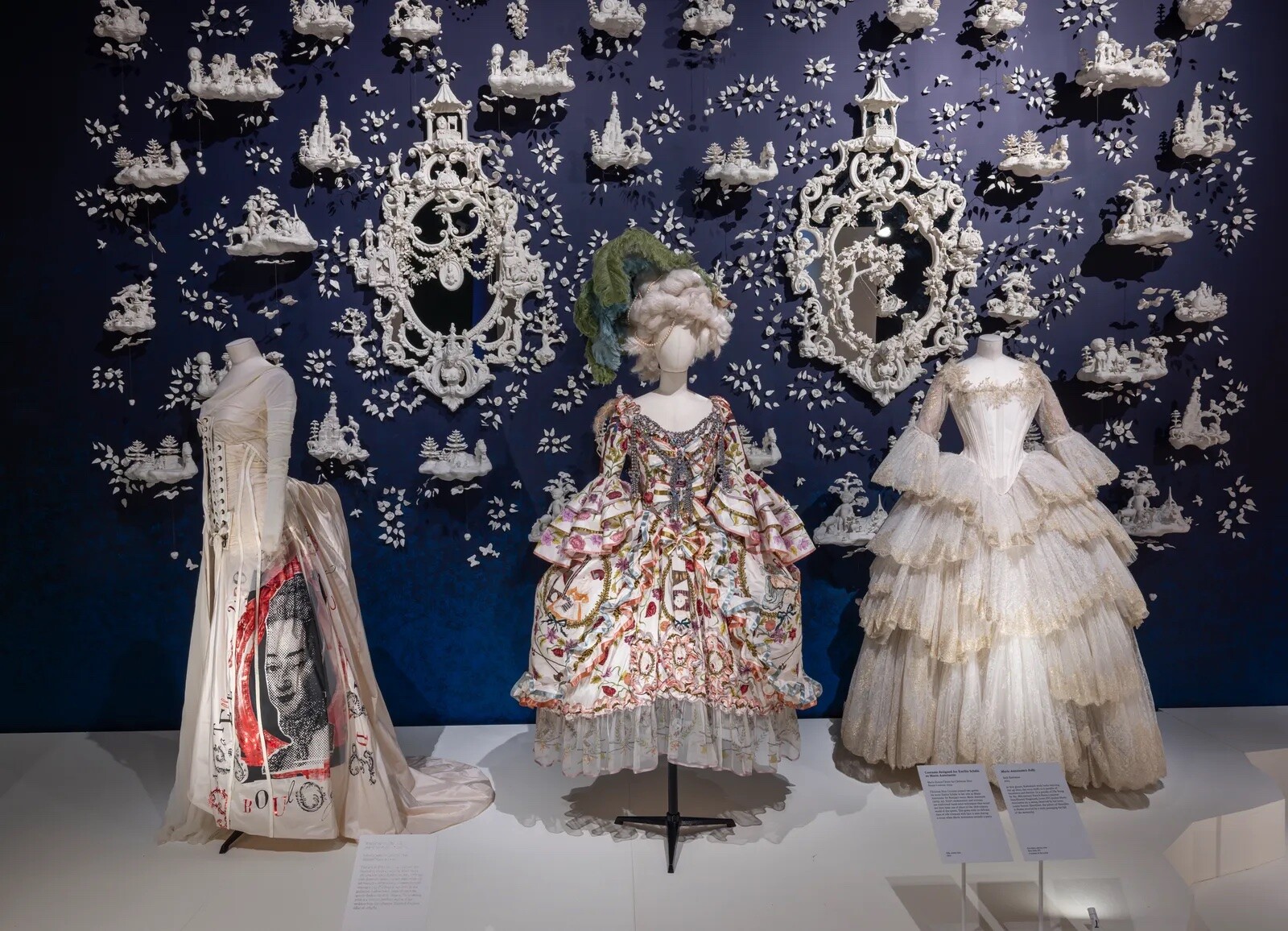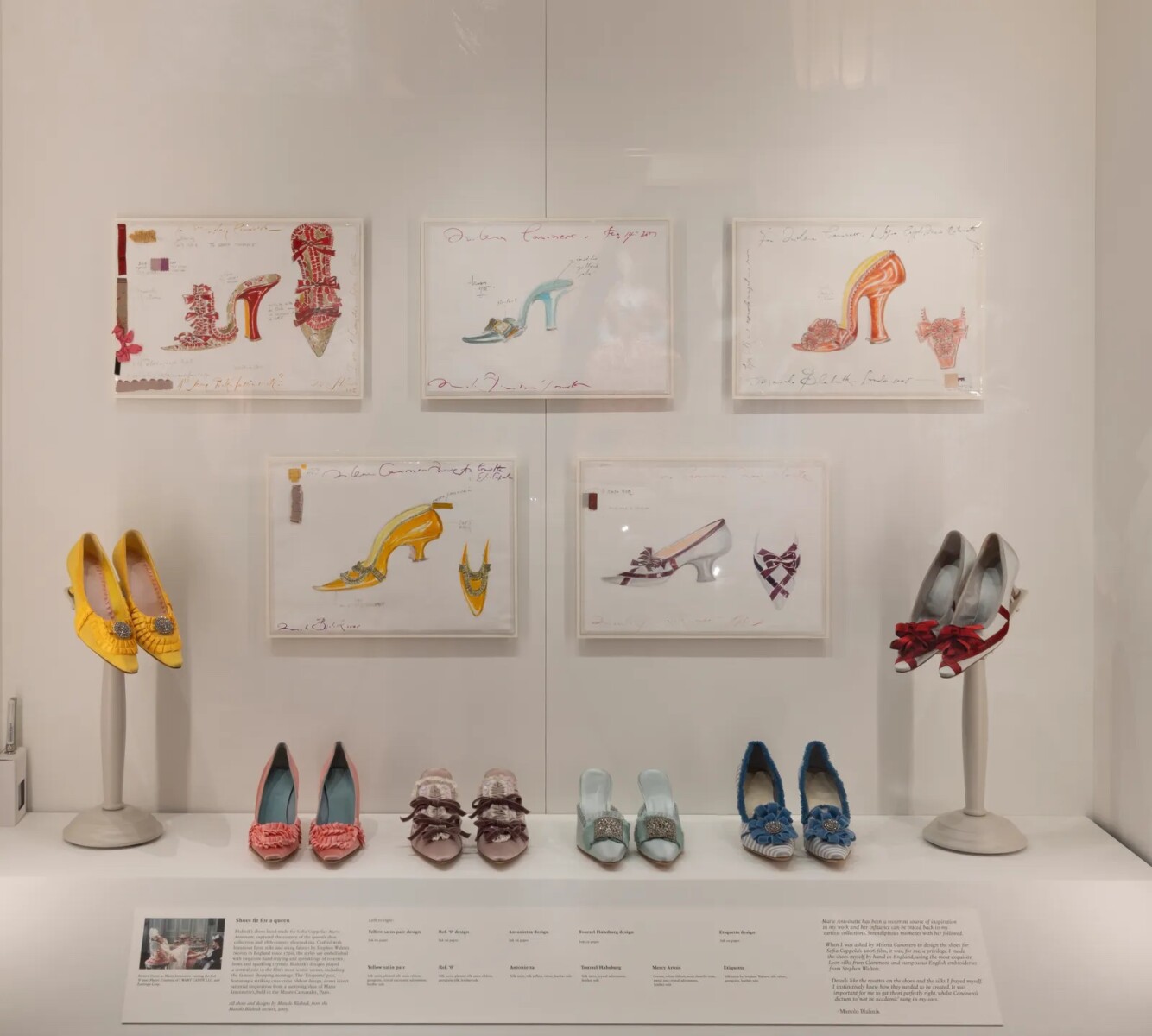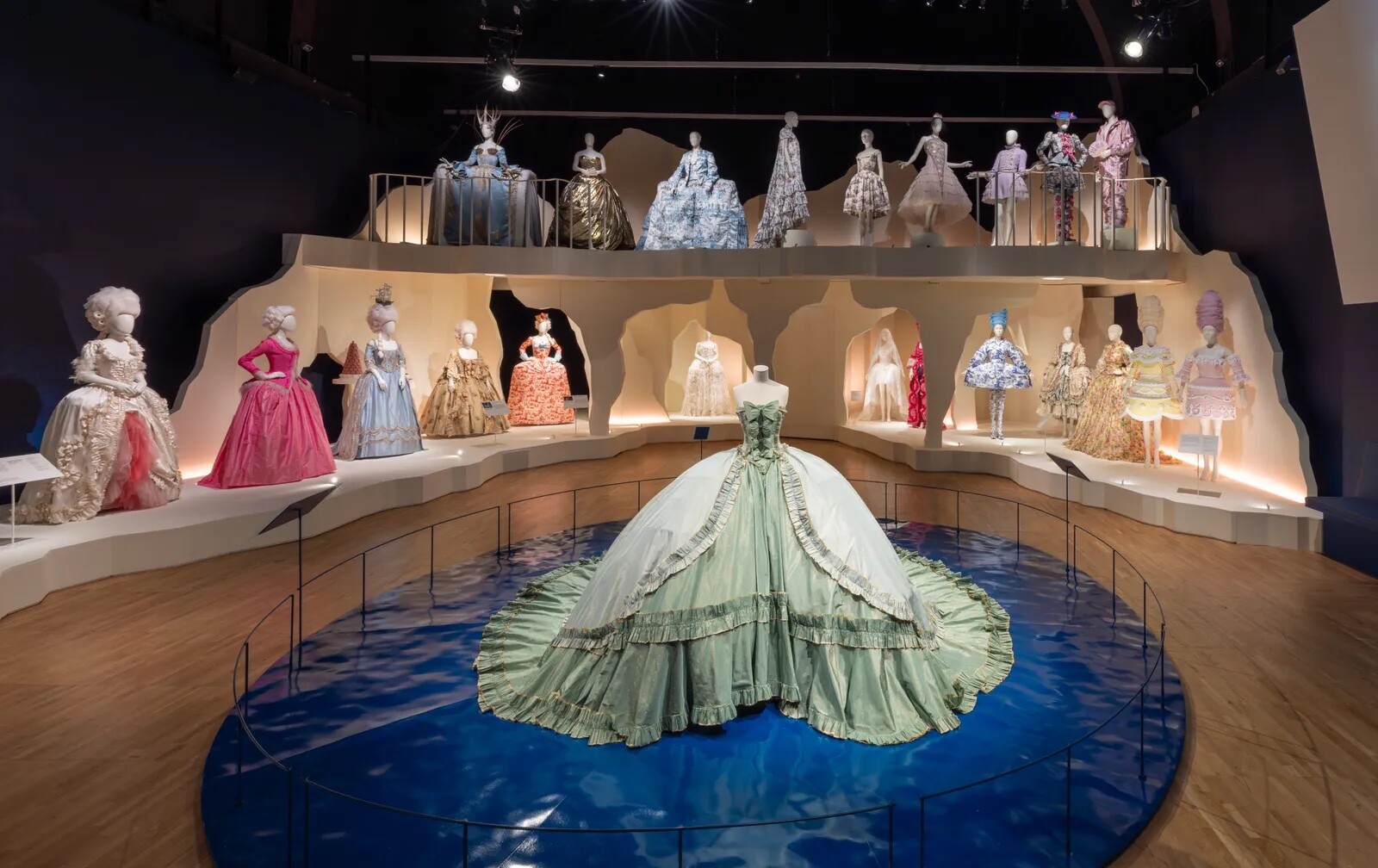Inside the V&A's Marie Antoinette Style with Curator Dr. Sarah Grant
20 Sep 2025The Victoria and Albert Museum have just unveiled Marie Antoinette Style, the UK’s first major exhibition dedicated to the queen’s enduring influence on fashion, interiors, design, and popular culture. From the extravagance of her court to the timeless motifs she inspired in couture, film, and decorative arts, the exhibition explores how Marie Antoinette's iconic image has continued to shape creative expression for more than 250 years.
We are delighted to sit down with Dr. Sarah Grant, Senior Curator at the V&A and curator of this landmark exhibition. With extensive expertise in the decorative arts, Dr. Grant has published widely on 18th and 19th century design and curated numerous acclaimed exhibitions. Her scholarship and curatorial experience bring a nuanced understanding of the complex interplay of style, identity, and cultural myth that defines Marie Antoinette’s enduring legacy.

Q: What inspired the V&A to mount the UK’s first exhibition dedicated to Marie Antoinette, and why now?
A: There had never been an exhibition on Marie Antoinette in the UK before, but she is a figure of great fascination to the British. Although Marie Antoinette was Queen of France her style has gained universal appeal and application, and she has a strong following in Britain thanks largely to the bestselling biography of Lady Antonia Fraser and then the Oscar-winning film based on that book by Sofia Coppola. Britain also plays a role in her story, in that Marie Antoinette was a key proponent of anglomania and English collectors were instrumental in preserving and then reviving her stye in the 19th century when they began purchasing her former collections after the revolutionary sales of 1793-1794.
The V&A has a number of important objects belonging to Marie Antoinette in its collections and we have world class collections of 18th-century French dress, jewels and decorative arts. We have a history of mounting shows that explore fashion and design icons, so why not focus on an early modern style icon and the most fashionable queen in history? This is an aspect of the queen that has not been treated in an exhibition before and there has been so much new research by curators and historians in the past 20 years that has really shifted our understanding of the queen, her character and her life, that the time felt perfect to do that.
Q: How did you decide which objects and artworks best illustrate her influence across fashion, interiors, and the decorative arts for this exhibition?
A: Her style encompasses so many different phases and is very broad, so I wanted to focus on the aspects of her style that have endured the longest and resonate the most with a contemporary audience. The objects and fashions that people would immeditately identify as ‘Marie Antoinette style’. So it was an editing process, choosing the very best examples – it is an exhibition of highlights. I wanted to show the extent of her influence across her entire environment, from interiors and fashion, to scent, gardens and music. That was the 18th-century approach to style – the gesamtkunstwerk, the interior was considered as a whole, so you have layers of beautiful objects and experiences. This means the exhibition is rich in all types of media; I think we have absolutely every type of object, from fashion, textiles, paintings, sculpture, porcelain, furniture, jewels, musical instruments, letters, olfactory, AV and so on.
Most importantly, I wanted people to get a sense of the real Marie Antoinette, to humanise her, to enable us to connect with her, through the most intimate, private and personal objects belonging to her. I didn’t want her to be a two-dimensional paper doll, lifted from a history book. So we have letters showing her handwriting, we have her private toiletry products – perfume bottles, powder pots, eye wash cup, we have her underwear from prison, her hair contained within a medallion, her shoes, her accessories, her jewels and the fragments of her wardrobe.
Q: Marie Antoinette has often been portrayed through myth and stereotype. How does the exhibition challenge common preconceptions about her?
A: We challenge the idea that her style and fashions were all about excess and that fashion in general was some sort of empty-headed distraction for her. I think people will see what exquisite taste she had, and how bold and modern she could be in her choices. We make the point that she had no political power and that as queen she was expected to nurture and promote native industries – this was her soft power and she was very good at it. She was also expected to create a regal spectacle – to perform – in the same way that the late Queen (HM Elizabeth II) said ‘I have to be seen to be believed’ – it was important in Marie Antoinette’s time for a monarch to be conspicuously visible and appropriately regal – in fact it is when she begins to withdraw from view that she becomes particularly unpopular.
We reiterate, although it is already widely accepted within academic and curatorial circles, that she did not bankrupt France. We dispel specific myths such as the breast bowl supposedly modelled on her breast, the ‘let them eat cake’ catch-phrase and the diamond necklace scandal that brought her to her knees but with which she had no involvement at all. We consider the backlash against her and the misogyny she faced which has compelling parallels today for women in the public eye. We consider how she supported new technologies and embraced aspects of enlightenment thought -particularly with regard to children and motherhood. All of this helps to contexualise her style but also to show to what extent myth overtook reality.
Q: The exhibition covers over 250 years of artistic responses. Which themes or works do you feel most strongly convey her lasting impact on design and style?
A: Every generation has interpreted her differently, based on their own social mores and political context. Today, she is often referenced (perhaps ironically) as a rebellious and confident female figure and even a glamorous villainess, which reflects our own generation’s emphasis on independence and self-expression (often sartorially). She also mirrors our society’s fascination with celebrity, beauty, hedonism and luxury. Many people identify with the conflict she experienced between public and private life and the scrutiny she faced as a woman.
Q: Were there any surprising discoveries during the curation process that shed new light on Marie Antoinette’s life or legacy?
A: Probably the level of involvement she had in her style choices and how incredibly personal many of them were. When you read the inventories and financial documents and records relating to her wardobe, you find many comments about what she particularly wanted and requested – for example a gown in a colour to match Louis XVI’s eyes and another embroidered with her favourite flowers from the Petit Trianon garden. You also gain an understanding of how her wardobe functioned as a royal chattel and its role in the court economy. The court is its own ecosystem – and everything depends on the king and queen. The many people employed within the queen’s household and her wardrobe in particular – their livelihood depends on her making new purchases and wearing new styles. Partly because this gives them employment but also because the majority of her wardrobe was re-distributed between them at the end of the year – it was considered part of their salary. They could then sell on or re-purpose these. So it is in their interest if the queen spends lavishly. Something else that surprised me was how exaggerated some of the ideas around the queen’s wardrobe and fashions continue to be. I still hear people say she never wore a gown more than once or that she commissioned hundreds of gowns a year, which simply isn’t true.
Q: If Marie Antoinette had access to Instagram, which piece in this exhibition do you think she would have posted about?
A: She definitely wouldn’t have chosen the formal court gown – with its rigid whaleboned bodice, paniers, and heavy train, which she famously despised and rushed to take off when she returned to her private rooms. She would have loved the more fashionable dress on display – I can see her posting the gorgeous pink robe à la polonaise – she wears a very similar one in a painting, and definitely her beloved pearl and diamond bow pendant which she packed up herself to smuggle out of France before they tried to escape in 1791. She would have absolutely adored the Dior gowns and Manolo Blahnik shoes in the grand finale. But ultimately, I think she would have posted the portrait of her with her children, and the medallion containing her hair and that of her son. She was a devoted mother – they were all she was thinking about as she neared her end – as evidenced in her final note: ‘My eyes have no more tears left to cry for you my poor children’.


